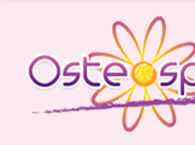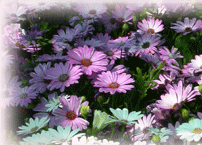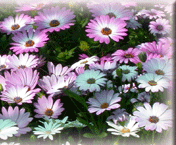



Osteospermum TypesHalf Hardy OsteospermumsMost Osteospermums listed on this website are half hardy perennials. This means they are tender and won't survive cold winters. They usually can cope with mild frosts, but in areas where the temperatures drop below -2 degrees Celsius they'll have problems surviving.This explains why most growers list them as an annual plant, even though they are in reality tender perennials. Hardy OsteospermumsAnother interesting and often confusing category is the group of so called Hardy Osteospermums. These are also perennial and are called 'hardy', because they tend to survive in colder temperatures. This certainly doesn't mean that they are hardy everywhere. We've been growing them for several years in East Anglia (UK) and so far without any losses due to frost. The hardy types also distinguish themselves by their growth habit. They are prostrate and have the tendency to spread. They are mainly of the jucundum and ecklonis species. Another distinguishing feature is the dark blue centre of the disc, which is present in all the jucundum varieties. The leaves are lancet, whereas the leaves of 'Ecklonis Prostratum' are toothed. O. Lady Leitrim Another obvious characteristic of the hardy types is the profuse flowering in early spring. However, unlike many other Osteospermums they don't get such a profuse second flush of flowers, although they continue flowering until the first frosts (and often beyond) with sporadic flowering. Go To The Hardy Varieties Page DimorphothecaThere seems to be some confusion about the annual and perennial forms. Although Osteospermums were formerly called 'Dimorphotheca' one has to remember that this name is now only used for the annual forms. These annuals are also known as 'Star of the Veldt' and are very different to the plants we know as 'Osteospermum'.
D. aurantiaca For a big picture of Dimorphotheca aurantiaca click here
The name 'Osteospermum' is exclusively used for the perennial forms. Both have in common that the flowers close at night. But the annuals or 'Dimorphotheca' are in many aspects very different to 'Osteospermums'. The garden varieties are hybrids of D. aurantiaca. Their colour range is quite different: orange, cream, white, yellow and salmon-pink. Like all other annuals 'Dimorphotheca' can be grown from seed. The flowering period isn't as long and frequent as that of Osteospermums and the plant isn't as long lived. The plants aren't suitable to propagate by cuttings. They are hardy annuals, so seeds can be sown in autumn as well as in spring. They dislike root disturbance, so it's advisable to sow seeds where they are to flower. The plants need a well-drained sandy soil. Place them in full sun or the flowers will refuse to open. Dead-head regularly to prolong flowering. WARNING: At present some of the reputable seed companies are incorrectly selling 'Dimorhotheca' under the name 'Osteospermum'. You will have to draw your own conclusions as to why they are doing this!! One company is even selling 'Livingstone Daisies' ('Mesembryanthemum') under the name of 'Osteospermum'. We recommend to first check if you are really buying 'Osteospermums' before ordering seed. To help you decide what you are buying see our Lists of Osteospermum and Dimorphotheca Seed. |
